5 endangered species in America part-2
Sierra Nevada Bighorn Sheep, Red Wolf (Canis lupus rufus), Indiana Bat (Myotis sodalis),
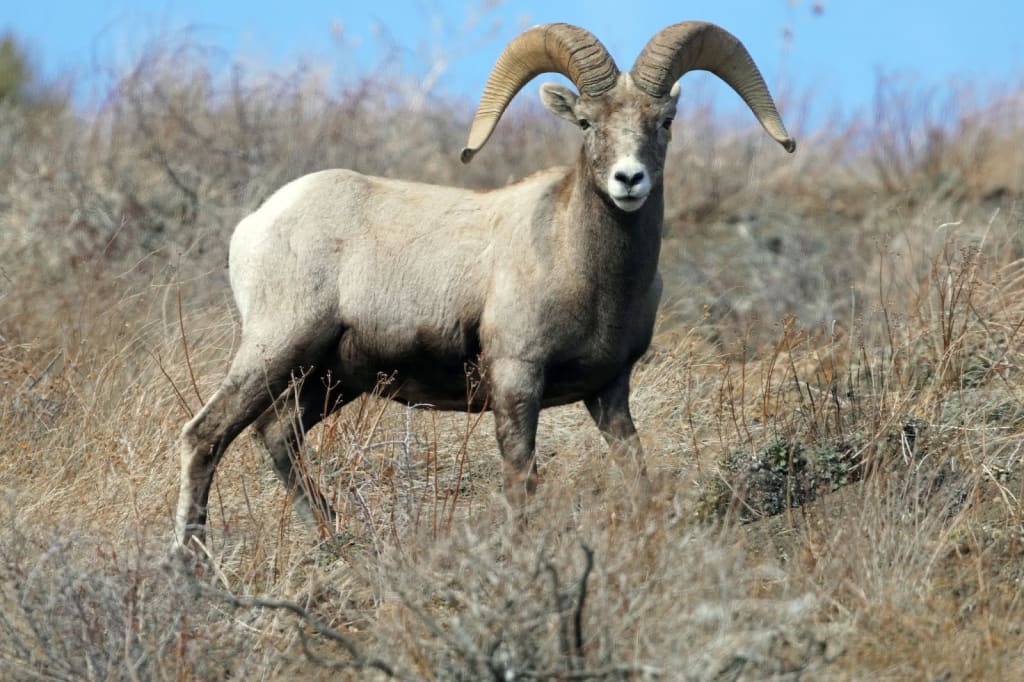
1., Sierra Nevada Bighorn Sheep:
Sierra Nevada Bighorn Sheep, or Ovis canadensis sierrae, is a subspecies of bighorn sheep that is native to the Sierra Nevada Mountains in eastern California. They are one of the smallest subspecies of bighorn sheep, with rams weighing between 150-200 pounds and ewes weighing 100-150 pounds.
Sierra Nevada Bighorn Sheep have a distinctive tan or brown coat, with a white rump patch and a white muzzle. Both males and females have horns, with the males' horns being larger and more curved than the females'.
Sierra Nevada Bighorn Sheep live in alpine and subalpine habitats, typically at elevations above 8,000 feet. They are well adapted to living in these harsh environments, with keen eyesight, excellent climbing abilities, and the ability to go without water for extended periods of time.
Like other bighorn sheep, Sierra Nevada Bighorn Sheep are primarily herbivores, feeding on a variety of grasses, shrubs, and other vegetation. They are known for their spectacular ability to navigate steep, rocky terrain, and can jump distances of up to 20 feet.
Sierra Nevada Bighorn Sheep are considered an endangered species, with only around 600 individuals remaining in the wild. The population has declined significantly in recent years due to a variety of threats, including habitat loss and fragmentation, disease, and competition with non-native species such as domestic sheep. Additionally, climate change is predicted to have a significant impact on Sierra Nevada Bighorn Sheep, as warming temperatures and changes in precipitation patterns may lead to changes in their habitat and food sources.
Efforts are underway to conserve Sierra Nevada Bighorn Sheep, including habitat restoration, disease management, and the establishment of captive breeding programs to increase the number of individuals in the wild. While the species remains critically endangered, these conservation efforts offer hope for the future of this iconic species.
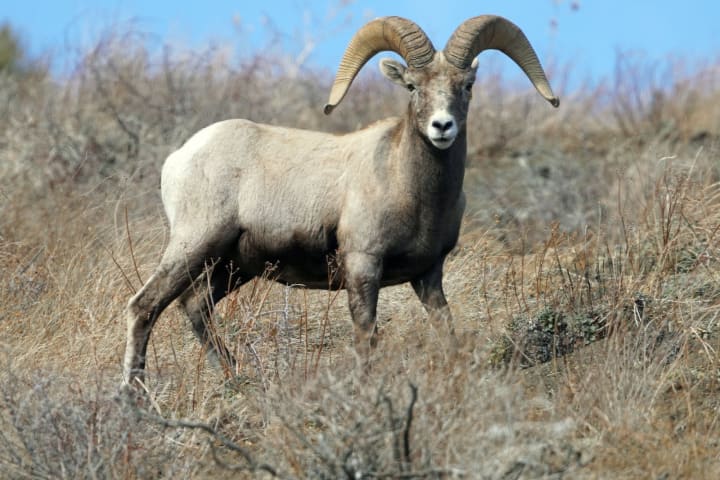
2., Red Wolf (Canis lupus rufus) :

The Red Wolf (Canis lupus rufus) is a critically endangered canid species native to the southeastern United States. It is one of the most endangered canids in the world and is recognized as a distinct species, although it has been the subject of taxonomic debate.
Here are some full details about the Red Wolf:
Physical Description:
Size: Red wolves are medium-sized canids, measuring approximately 4.5 to 5.5 feet (1.4 to 1.7 meters) in length from nose to tail and weighing between 45 to 80 pounds (20 to 36 kilograms).
Appearance: They have a reddish-brown coat, which is where their name originates. Their fur can vary in color, with some individuals having lighter or darker shades. They have a mixture of gray and black fur on their back, along with a characteristic black-tipped tail and black ears.
Habitat:
Historical Range: Red wolves historically ranged throughout the southeastern United States, including parts of Texas, Louisiana, Mississippi, Alabama, Georgia, Florida, and the Carolinas.
Current Range: Today, the red wolf's wild population is restricted to a limited area within northeastern North Carolina in the Alligator River National Wildlife Refuge, Pocosin Lakes National Wildlife Refuge, and surrounding private lands.
Behavior and Diet:
Social Structure: Red wolves are typically social animals and form packs consisting of an alpha breeding pair and their offspring. They exhibit cooperative hunting and communicate through a range of vocalizations, including howls, barks, and growls.
Nocturnal Behavior: Red wolves are primarily nocturnal, meaning they are most active during the night, although they can also be active during dawn and dusk.
Diet: Their diet mainly consists of small to medium-sized mammals such as rabbits, rodents, and white-tailed deer. They may also feed on carrion and occasionally consume vegetation.
Conservation Status and Threats:
Endangered Status: The red wolf is classified as critically endangered by the International Union for Conservation of Nature (IUCN).
Decline and Restoration Efforts: Red wolves faced extensive hunting and habitat loss throughout the 20th century, leading to their near extinction. In the 1970s, conservation efforts began with the capture of remaining individuals for a captive breeding program. The captive-bred population was subsequently reintroduced into the wild, and the current wild population is the result of these restoration efforts.
Threats: The red wolf faces several threats, including habitat loss, hybridization with coyotes, disease, and human-related mortality. Human activities, such as illegal hunting and habitat fragmentation, continue to pose significant challenges for their recovery.
Conservation and Recovery Programs:
Captive Breeding: The Red Wolf Recovery Program initiated captive breeding efforts to prevent the extinction of the species. Numerous facilities participate in breeding and reintroduction programs to maintain a genetically diverse captive population.
Reintroduction Efforts: Reintroduction of red wolves into their historical range in northeastern North Carolina has been a key strategy for their recovery. These reintroduced populations are carefully managed and monitored.
Public Education and Awareness: Various organizations and agencies conduct educational programs and public outreach initiatives to raise awareness about the red wolf's plight and promote conservation efforts.
In summary, the Red Wolf is a critically endangered canid species native to the southeastern United States. It is known for its reddish-brown fur and historically inhabited a range of states. Due to extensive hunting and habitat loss, the red wolf faced near extinction, but conservation efforts, including captive breeding and reintroduction programs, are being implemented to save the species and restore its population in the wild.
3., Indiana Bat (Myotis sodalis):
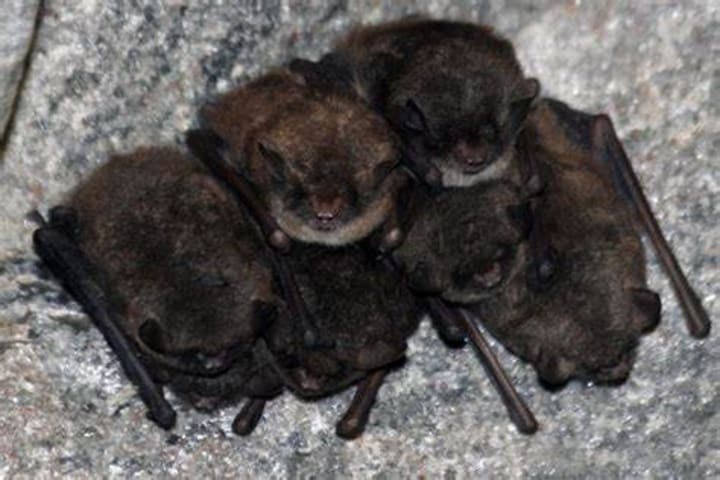
The Indiana Bat (Myotis sodalis) is a small, insectivorous bat species native to the United States. It is named after the state of Indiana, where it was first discovered. The Indiana Bat is federally listed as endangered due to a significant decline in population numbers.
Here are full details about the Indiana Bat:
Physical Description:
Size: Indiana Bats are small bats, with a length ranging from 1.2 to 2.0 inches (3.0 to 5.1 centimeters) and a wingspan of approximately 9 to 11 inches (23 to 28 centimeters).
Appearance: They have glossy, dark brown to grayish-brown fur. Indiana Bats have a keel-shaped calcar, a cartilaginous extension on the hind limb, which helps with flight. They have short, rounded ears and a wingspan with a distinctive appearance due to the elongated fingers supporting the wing membrane.
Habitat:
Range: Indiana Bats are found in the eastern and central parts of the United States. Their range extends from Iowa and Nebraska in the west to New York and North Carolina in the east, and from southern Ontario in Canada to northern Florida in the south.
Roosting Sites: During the summer, Indiana Bats roost in a variety of habitats, including caves, mines, and sometimes trees. They prefer large, undisturbed caves and mines with stable temperature and humidity levels for hibernation during the winter.
Behavior and Diet:
Nocturnal Behavior: Indiana Bats are nocturnal, meaning they are active during the night. They emerge from their roosts at dusk to forage for insects.
Hibernation: In winter, Indiana Bats enter hibernation and form large colonies in caves and mines. They hibernate from November to March, depending on the region and weather conditions.
Diet: Indiana Bats primarily feed on small flying insects, such as moths, beetles, and flies. They use echolocation, emitting high-frequency sounds and listening to the echoes to navigate and locate prey.
Conservation Status and Threats:
Endangered Status: The Indiana Bat is listed as endangered under the Endangered Species Act in the United States.
Population Decline: The species has experienced a significant decline in population size due to various factors, including habitat loss, disturbance during hibernation, and a fungal disease called white-nose syndrome.
White-Nose Syndrome: This disease, caused by the fungus Pseudogymnoascus destructans, affects bats during hibernation and has resulted in large-scale mortality among Indiana Bats and other bat species in North America.
Conservation and Recovery Efforts:
Protection of Roosting Sites: Efforts are made to protect caves, mines, and other important roosting sites used by Indiana Bats during the summer and winter.
Monitoring and Research: Scientists and conservation organizations monitor the population status and behavior of Indiana Bats to gather data for conservation planning and management.
Education and Public Outreach: Raising awareness about the importance of conserving bats, including the Indiana Bat, is crucial. Public outreach programs promote bat-friendly practices, such as preserving natural habitats and limiting disturbance to roosting sites.
4., Puerto Rican Parrot (Amazona vittata):
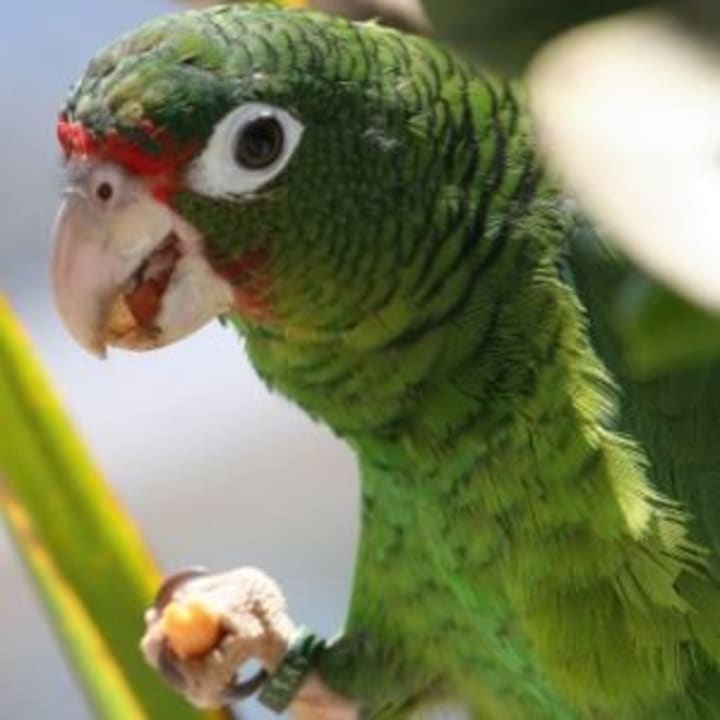
The Puerto Rican Parrot (Amazona vittata), also known as the Puerto Rican Amazon, is a critically endangered bird species endemic to the island of Puerto Rico in the Caribbean. It is the only remaining native parrot species in Puerto Rico.
Here are full details about the Puerto Rican Parrot:
Physical Description:
Size: Puerto Rican Parrots are medium-sized parrots, measuring approximately 28 to 33 centimeters (11 to 13 inches) in length.
Appearance: They have a predominantly green plumage with a distinctive blue forehead and a red frontal band extending from the forehead to the lores. They have a white eye-ring, a yellow patch on the wings, and a red patch on the shoulders. Juvenile birds have a more subdued coloration and lack the red patches.
Habitat:
Native Range: The Puerto Rican Parrot is native to the island of Puerto Rico in the Caribbean.
Preferred Habitat: Historically, they inhabited the lowland and montane forests of Puerto Rico. They prefer mature forests with tall trees for nesting and foraging.
Behavior and Diet:
Social Behavior: Puerto Rican Parrots are highly social and live in flocks. They engage in social interactions, vocalizations, and mate for life.
Diet: Their diet consists primarily of fruits, seeds, flowers, and leaves. They feed on a variety of tree species, including the Sierra Palm (Prestoea montana), which is an important food source.
Conservation Status and Threats:
Endangered Status: The Puerto Rican Parrot is listed as critically endangered by the International Union for Conservation of Nature (IUCN) and is protected under the U.S. Endangered Species Act.
Population Decline: The species has faced severe population declines due to habitat loss, hunting, and predation by introduced species, such as the Black Rat (Rattus rattus).
Hurricanes and Disease: Natural disasters, including hurricanes, have further impacted the population. Additionally, the parrots are susceptible to diseases such as avian malaria and psittacine beak and feather disease.
Conservation and Recovery Efforts:
Captive Breeding: Captive breeding programs have been instrumental in the recovery efforts for the Puerto Rican Parrot. The program began in the 1970s with the establishment of the Puerto Rican Parrot Recovery Program, and multiple institutions collaborate to breed parrots in captivity and reintroduce them into the wild.
Habitat Protection: Efforts are underway to protect and restore the parrot's habitat through reforestation, removal of invasive species, and establishing protected areas, such as the El Yunque National Forest.
Research and Monitoring: Scientists and conservationists conduct research and monitor the parrot populations to understand their ecology, behavior, and health. This information guides conservation strategies.
Public Awareness and Education: Public outreach and educational programs raise awareness about the plight of the Puerto Rican Parrot and promote actions to protect the species and its habitat.
In summary, the Puerto Rican Parrot is a critically endangered bird species endemic to Puerto Rico. It features green plumage, a blue forehead, and distinctive red and yellow patches. The species faces significant threats, including habitat loss, hunting, predation, and susceptibility to diseases. Conservation efforts focus on captive breeding, habitat protection, research, and public education to ensure the recovery and survival of this iconic bird species.
5., North Atlantic Right Whale (Eubalaena glacialis) :
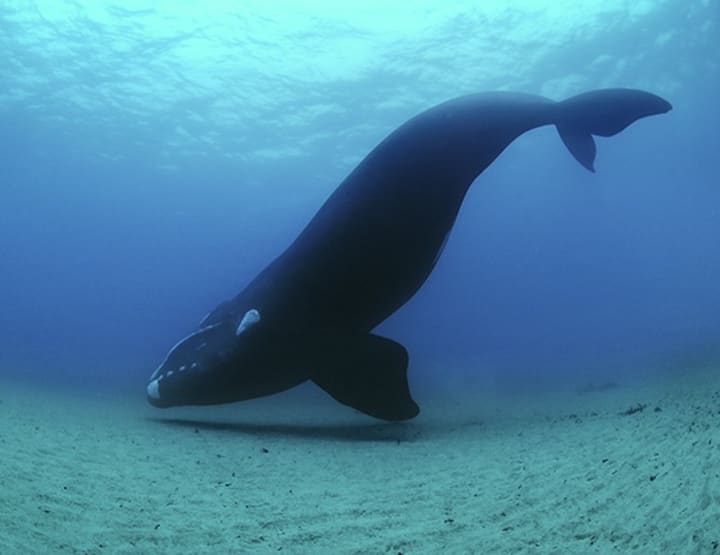
The North Atlantic Right Whale (Eubalaena glacialis) is a large marine mammal belonging to the family Balaenidae. It is one of the most endangered whale species in the world and is known for its massive size and distinctive features.
Here are full details about the North Atlantic Right Whale:
Physical Description:
Size: North Atlantic Right Whales are among the largest whale species, measuring around 45 to 55 feet (13.7 to 16.8 meters) in length.
Appearance: They have a stocky body with a broad back and no dorsal fin. Their skin is predominantly black, often covered with rough patches of white or grey called callosities. These callosities are unique to each individual and can be used for identification purposes.
Habitat and Migration:
Range: North Atlantic Right Whales are found primarily in the North Atlantic Ocean. They have a coastal distribution, occurring from the southeastern United States and Gulf of Mexico up to eastern Canada and occasionally into the Arctic waters.
Migration: The species undergoes long migrations, with individuals moving between feeding grounds in the summer and calving grounds in the winter. Their calving grounds are mainly found in the southeastern United States.
Behavior and Diet:
Social Behavior: North Atlantic Right Whales are social animals and often form small groups called pods. They are known for their curious and gentle nature, often approaching boats.
Vocalizations: They produce various vocalizations, including low-frequency moans, groans, and pulsed sounds, which are believed to be used for communication and social interaction.
Feeding: The diet of North Atlantic Right Whales primarily consists of zooplankton, particularly a small shrimp-like crustacean called Calanus finmarchicus. They are filter feeders, using baleen plates to filter the water and capture their prey.
Conservation Status and Threats:
Endangered Status: The North Atlantic Right Whale is listed as critically endangered by the International Union for Conservation of Nature (IUCN) and is protected under the U.S. Endangered Species Act.
Population Decline: The species has experienced a significant decline in population size due to historical whaling activities, entanglement in fishing gear, ship strikes, habitat degradation, and reduced reproductive success.
Threats: Entanglement in fishing gear, particularly commercial fishing lines and nets, is one of the major threats to the species. Ship strikes and noise pollution from vessel traffic also pose significant risks.
Conservation and Recovery Efforts:
Protective Measures: Various regulations and management measures have been implemented to protect North Atlantic Right Whales. These include vessel speed restrictions, gear modifications in fishing industries, and the establishment of protected areas.
Research and Monitoring: Scientists and conservation organizations conduct research to better understand the behavior, migration patterns, and population dynamics of North Atlantic Right Whales. This knowledge helps inform conservation strategies.
Collaboration and Partnerships: International collaborations between governments, researchers, conservation organizations, and fishing industries are vital for the conservation and recovery of the species.
Public Education and Awareness: Public outreach and educational programs raise awareness about the plight of North Atlantic Right Whales and the importance of conservation. These efforts aim to foster support and responsible behavior towards these magnificent creatures.
About the Creator
Enjoyed the story? Support the Creator.
Subscribe for free to receive all their stories in your feed. You could also pledge your support or give them a one-off tip, letting them know you appreciate their work.






Comments
There are no comments for this story
Be the first to respond and start the conversation.